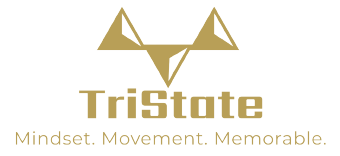How to Effectively Use RPE & Auto-Regulation in Training
How to Effectively Use RPE & Auto-Regulation in Training
RPE—Rate of Perceived Exertion—is more than just a number on a scale. At TriState, it’s a key tool in our training language. When used well, it builds consistency, self-awareness, and long-term performance. But if misunderstood, it can easily turn into a guessing game or ego trap.
How We Teach RPE at TriState
We introduce RPE using a 10-point scale:
RPE 1–3: Movement-only effort. Think PVC pipe, warm-ups, or light dumbbell work.
RPE 4–6: Technique-focused work. There’s some load, but it’s easy and repeatable.
RPE 7: Consistent training weights with mild stress—there’s effort, but no struggle.
RPE 8: High focus. These lifts should always be makes—sharp, clean, intentional.
RPE 9–10: Maximal effort, reserved for PR attempts or platform lifts. Rare, but powerful.
When athletes are new, we don’t immediately write RPE into their programs. Instead, we build awareness through conversation. I’ll ask, “How did that feel?” and based on their response, I’ll explain where that effort likely lands on the scale. It’s a teaching moment—not a number game.
Building Athlete Honesty Through Purpose
The only way RPE works is when athletes are honest. That means checking the ego at the door. To encourage this, I focus on explaining the “why”:
Why are we pulling back today?
Why does an RPE 6 still matter?
Why does consistency beat PR-chasing?
Once athletes see that recovery, focus, and intent are built into the process, they become more willing to self-regulate—and trust the long game.
An RPE Win: A Real-World Example
I was working with one of my national-level athletes. We had a day programmed around an RPE 7–8, but she was missing lifts around 80%. After talking, it became clear she lacked clarity on the session’s focus.
We pulled back, reset the goal, dropped the weight, and dialed in. She ended that session hitting close to 98%, clean and confident. Three days later, she PR’d.
That’s the power of auto-regulation: flexibility with purpose, not a failure to follow the plan.
Blending RPE, Percentages & Velocity
I rarely stick to just one system. Instead, I blend:
Percentages for strength-building phases (e.g., squats during base cycles).
RPE for lifts when technique, fatigue, or mental focus are key.
Velocity systems to monitor bar speed and CNS readiness, especially in squatting close to comp.
Example:
If we’re doing a heavy 5x5 squat, I’ll give set percentages. But if we’re doing block snatches afterward, I might say, “Work to an RPE 7—make all your lifts and stay sharp.”
Closer to meets, the system flips. I might assign RPE to squats to protect recovery and use set percentage minimums for snatch and clean & jerk to ensure platform readiness.
Final Thoughts: Train With Awareness
RPE isn’t about training less. It’s about training smarter. It allows for:
Real-time adjustments
More consistent progress
Fewer unnecessary misses
When used well, it turns every session into a skill session, not just a grind. And that’s the kind of training that lasts.
